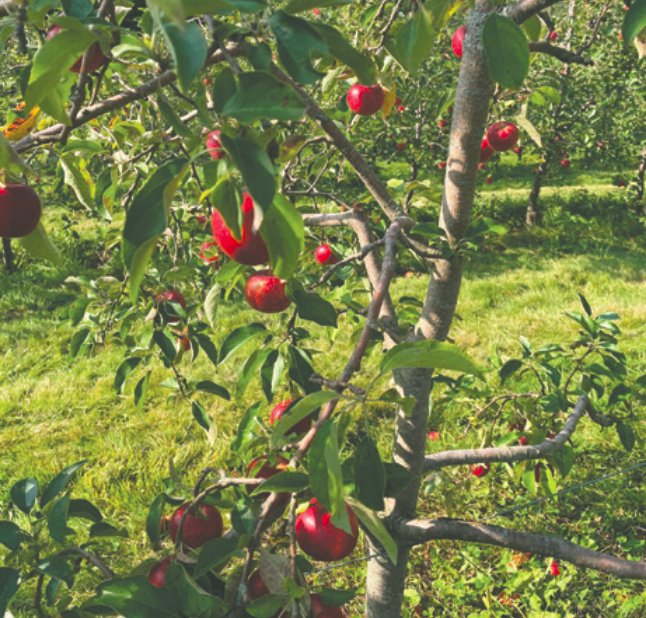This summer there have been numerous reports of local farmers, gardeners, sugar maple grove owners, as well as others, who have been dealing with challenging weather conditions, as well as concerning tree and plant disease outbreaks. According to plant and tree expert Jason Lilley of the University of Maine Cooperative Extension Service, this year’s challenges began with some periods of excessive cold in the winter and spring, followed by many episodes of high rainfall throughout the summer.
For instance, there have been occasions when farmers were not able to get their equipment into fields to harvest their hay. This is concerning because it can affect a farmer’s bottom line in several ways, as farmers often store their hay to use as wintertime animal feed, and they also sell surplus hay as a way to raise needed cash.

Despite a sub-zero cold snap and late freeze, local growers managed to have decent apple crops, but with smaller fruit.
Farmers growing summertime annual vegetable crops have noticed more leaf and fruit diseases this year, as the constant rain and moist conditions have caused plant diseases to spread and grow more. Leaf diseases affect a plant’s ability to grow, which affects crop yields, and fruit diseases can damage the fruit, or make it look less sellable.
Mary Walker of Orchard Ridge Farm commented to the Gorham Times that this year’s range of challenging conditions has caused a variety of results at her family’s orchard, which currently has an emphasis on U-Pick blueberries and apples as the main cash crops. She said her blueberry plants seemed less affected by the wet conditions, probably because the plants are situated in a very well drained area. Since Orchard Ridge does not irrigate, this year’s plentiful rainfall may have actually been helpful to the blueberry plants.
On the other hand, Walker’s apple tree crops were damaged by a sub-zero cold snap in early February, followed by a late freeze in mid-May. The apple trees which still set decent numbers of fruit produced smaller fruit.
Efforts to follow recommended tree spraying schedules were affected by the excessively muddy conditions in the rows, as well as the wind. (Moist conditions combined with less spraying can cause apples to develop a blemished appearance and look less saleable.) Fortunately, Orchard Ridge also has a side business of selling imperfect-looking apples to several nearby cider producers. These apples are just as edible, but with skin blemishes that can make them appear imperfect.
An ongoing concern for apple growers is that trees growing in very wet soil may develop root rot, but the full effects of this may not be apparent for a year or more.
During the summer, many people in Gorham and throughout southern Maine began noticing concerning changes to many of their sugar maple trees. As early as late July, the leaves of affected trees started to wilt, turn brown, then fall off the tree. Certain trees appeared to be more affected than others, with some becoming virtually bare by mid-September, which is about a month ahead of the normal schedule.
Lilley said these maple trees likely have a type of fungal leaf disease known as maple anthracnose, which is known to cause early leaf drop by affecting photosynthesis, which lowers the tree’s ability to produce necessary sugars and carbohydrates.
Lilley reports that in past outbreaks, experts did not observe a drop in the sugar production of affected trees the following spring. However, the Extension Service is closely monitoring the current outbreak. Lilley also commented that anthracnose outbreaks are likely worsened by prolonged periods of wet weather, such as the conditions we had this year.


